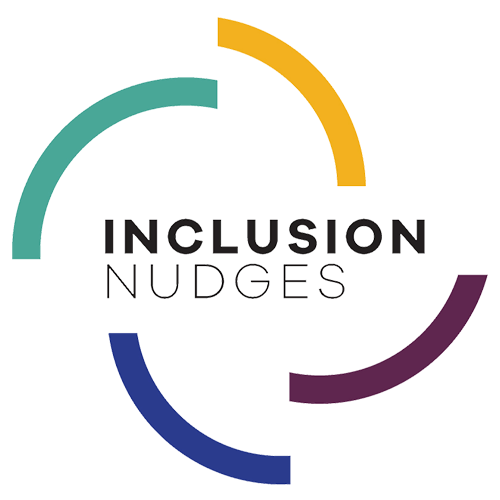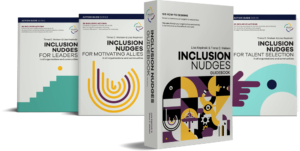Do you want make good decisions and come up with new and better solutions? Here are 4 practical ways that you get access to diversity and reduce the negative influences of biases.
Mitigate unconscious bias throughout the process
Given that innovation is about finding new and better solutions, it is important to mitigate bias and preferences for information, knowledge, insights, and ideas that we unconsciously recognise as familiar. We also need to make sure we get access to the diversity in the group of people that we collaborate with throughout the entire process. The same goes for making good decisions. The problem is that we often don’t leverage the potential of people and groups. And what a waste of talent and human potential that is.
To avoid this loss of human potential, you can counter this with simple process design Inclusion Nudges. Some of these are briefly described below.
Anonymous and written sharing: In meetings, participants write their input on notes (anonymously) before anyone talks. This ensures that contributors experience psychological safety and everyone has access to a diversity of voices and perspectives1.
Reversed default: When discussing which ideas are best and why, change the default starting point to be ‘all ideas are the best’ and ‘why not this idea?’. This changes the perspective.
Perspective taking: Bias can be mitigated by increasing our ability to take the perspective of others. To do this, apply designs that prompt our thinking with questions about what others would have done, such as “What would your grandfather do about this?” or “What would a community member with a chronic disease do here?”. It decreases stereotypical biases at both conscious and non-conscious levels2. This mitigates bias and stereotypes in the co-production process – but not by the intentional suppression of stereotypical thoughts, because that has been proven by research ironically to produce the very thoughts one is suppressing3.
Flip Questions: Encourage participants to ask what we call Flip Questions inside their own mind as they interact. Examples are “If he was not a social welfare recipient, but a doctor, would I find him more competent?” or “If she was a man, would I interpret what she just did differently?”. This helps to change biased judgements and perceptions during interactions, and thus also to change behaviour (the way we listen and engage).
In a facilitated co-creation process, evaluation of diverse inputs and ideas by participants in the process is ongoing. Various biases will inevitably occur. We all do this, ourselves included. Therefore, it’s important that the process is designed and facilitated to mitigate biases, as well as to counter negative group dynamics, such as group conformity and self-silencing. This has proven an effective way to access diversity of thought, give people a voice, and ensure a feeling of inclusion and empowerment, as well as ownership during and after the process.
Here is a challenge for you!
Watch Tinna’s TEDx talk and take part in a live experiment.
You also get more inspiration to make your own Flip Questions as well as other process designs.
References
- THE INCLUSION NUDGES GUIDEBOOK. Lisa Kepinski & Tinna C. Nielsen
- PERSPECTIVE-TAKING: DECREASING STEREOTYPE EXPRESSION, STEREOTYPE ACCESSIBILITY, AND IN-GROUP FAVORITISM. Adam Galinsky & Gordon Moskowitz, Journal of Personality and Social Psychology, 2000
- OUT OF MIND BUT BACK IN SIGHT: STEREOTYPES ON THE REBOUND. C.N. Macrae, G.V. Bodenhansen, A.B. Miine, & J. Jetten, Journal of Personality and Social Psychology, vol 67, pgs 808-817, 1994







